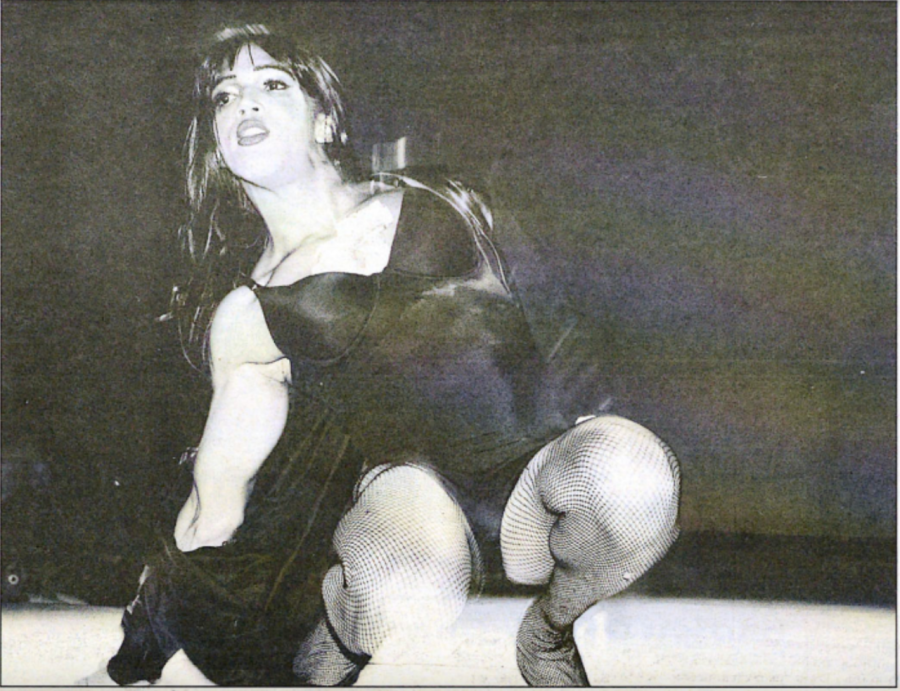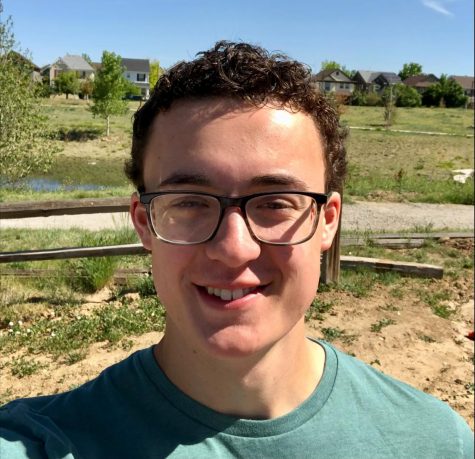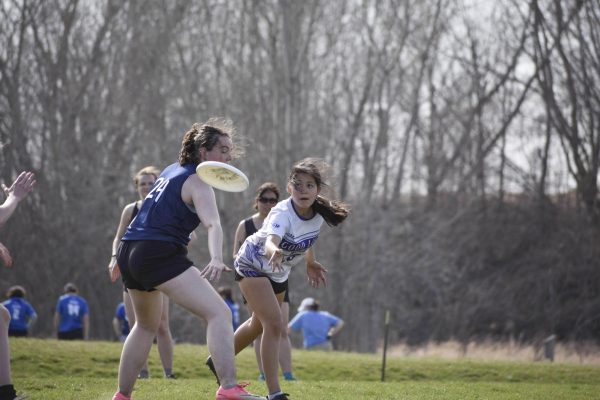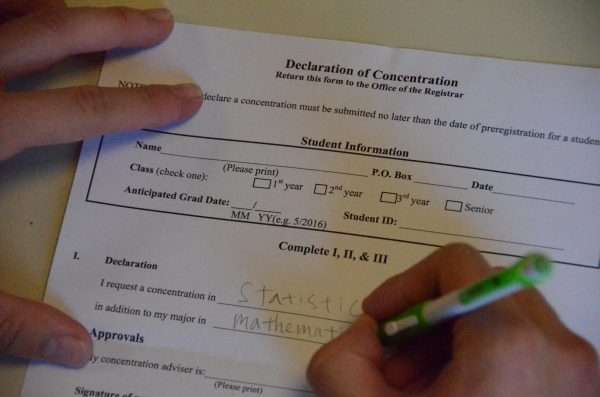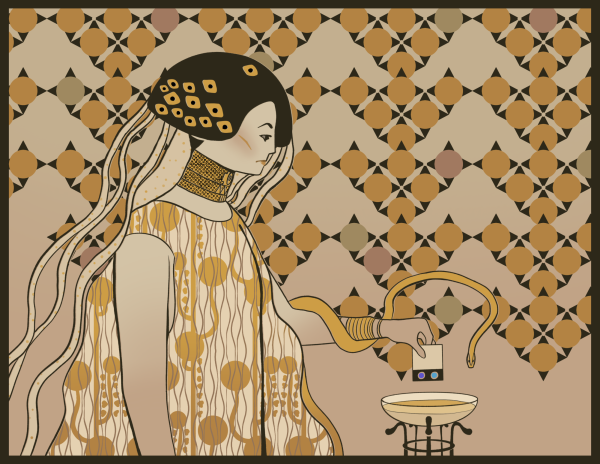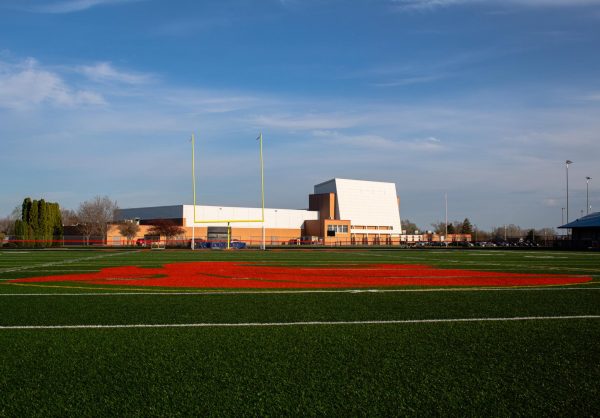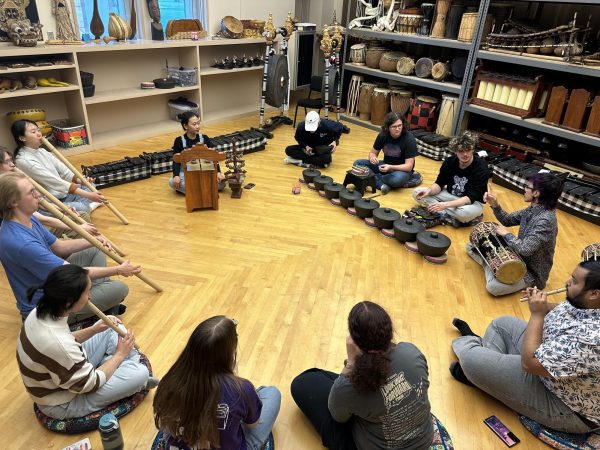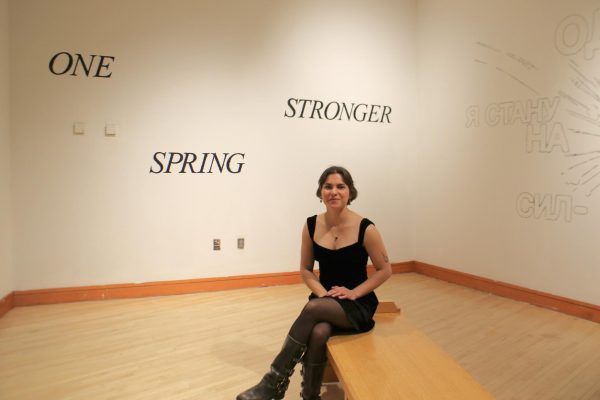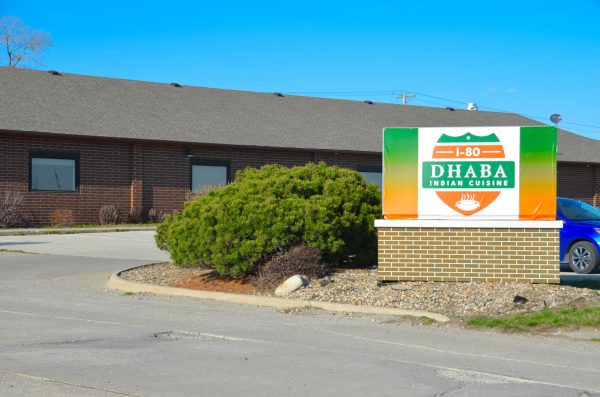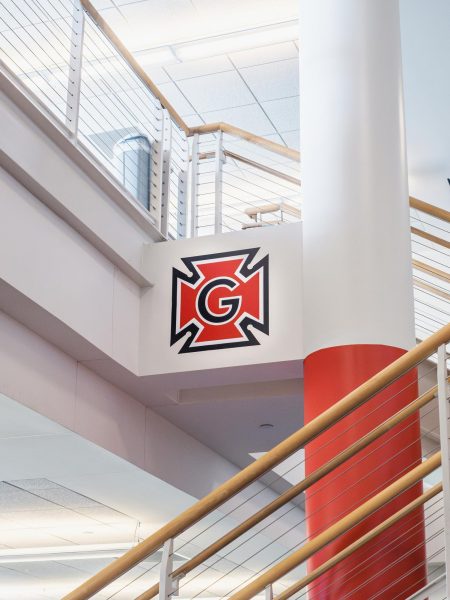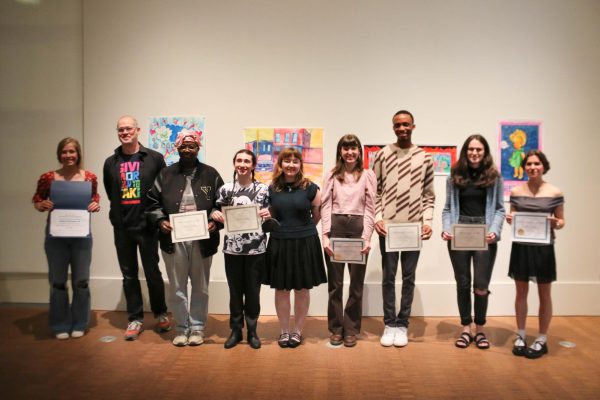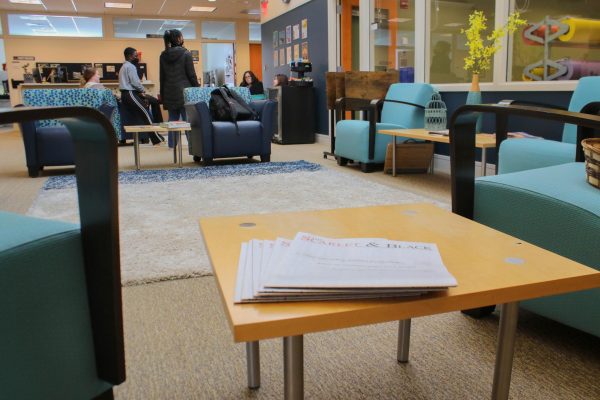History Takeover: The Grinnell College Drag Show
From Scarlet & Black November 20, 2006.
April 24, 2023
Drag Show ranks among Grinnell College’s most prominent traditions, occupying a place next to time-honored customs such as 10/10, TitHead and Relays. But when did students host the first Drag Show on campus?
To answer this, I spoke with two alumni-turned-professors, Fredo Rivera `06, art history, and Sarah Purcell `92, history, as well as Sarah Smith-Benanti, who works for the department of alumni relations. Each offered a similar answer — all evidence suggests that the first Drag Show took place in November 2006.
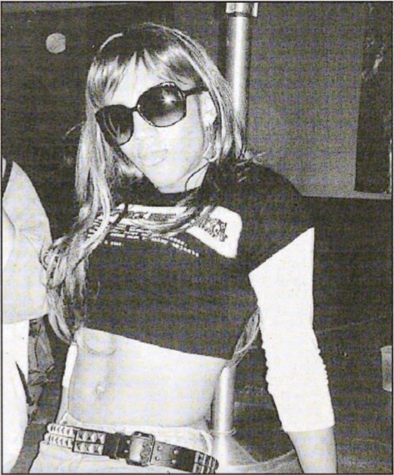
However, Purcell remembered Grinnell students driving to gay bars in Des Moines and Iowa City in the 1990s. She emphasized that students have been largely accommodating of the LGBTQ+ community throughout her time at Grinnell, particularly in comparison to the country at large. Additionally, the annual Mary B. James party — hosted since 1988 — involves elements of cross-dressing. Rivera cautioned against equating Mary B. James with drag, though, explaining that the former is a “fun party” where students can play with their gender, while Drag Show represents “an opportunity on the stage for queer students to express themselves.”
In 2006, Queer People of Color (QPOC) held the inaugural Drag Show. Spearheaded by Isaac Vasquez `07, the event donated proceeds to HIV testing on campus, according to an S&B article published on Nov. 3, 2006. The original Drag Show organizers looked to hire professional performers, but when those efforts fell through, they decided to feature students instead — a tradition that continues today.
Drag Show immediately resonated with the Grinnell community. S&B articles in the following years highlighted the success — an October 2007 piece referenced the school’s excitement for the upcoming “third semi-annual Drag Show,” the newspaper claimed in April 2008 that the show had grown “bigger and bigger” in the prior two years and in November 2008, an anonymous student complained that the Drag Show had grown “too crowded” for its own good.
“It’s a cherished memory,” said Smith-Benanti. In her conversations with alums, she remarked that many “have been thinking about these performances … year after year of their lives.”
“People always love Drag Show,” agreed Rivera, who teaches a tutorial about drag and regularly speaks with students attending the show.
The Drag Show has never existed in a vacuum. In the early years of Drag Show, the spring performance took place during Pride Week. In autumn, it marked the crowning event of “Love Your Body” week — a series of events hosted by the Feminist Action Coalition that included naked yoga, discussions around body positivity and “masturbation workshops.”
In March 2008, a wave of anti-LGBTQ+ hate mail rocked campus. The next month’s Drag Show responded to the vitriol with joy, seeking to undermine it with a celebration of pride and free expression.
Then in 2009, the Iowa Supreme Court overturned a rule against same-sex marriage. As one of the first states to legalize gay marriage, Iowa seemed ahead of most of the country in accommodating LGBTQ+ students.
[Drag] is not causing the anti-gay or anti-trans sentiment, but it is a convenient cultural target for people who wish to express those sentiments.
— Sarah Purcell, Professor of history
14 years later, the situation has changed.
As the S&B has reported, bills passed by the state legislature have attacked the rights of trans and nonbinary Iowans, particularly children. According to Purcell, the about-face stems from both the Republican Party’s “consolidation on one-party rule” in the state, and the “ascendance of social conservatism to the extreme.”
The organizer of this year’s Drag Show, Jenny Rodrigues Santos `23 spoke about the relationship between today’s political climate and Grinnell’s tradition. “I’m not sure if I can live here in a few years,” said Rodrigues Santos.
As Purcell explained, drag has always responded to politics. Unique to this moment, though, is that politics are responding to drag. At least 15 states have introduced laws aiming to restrict drag performance, resting on the notion that drag enables pedophilia. Purcell attributes this backlash to the fact that drag has become mainstream, with shows like RuPaul’s Drag Race achieving widespread popularity.
“[Drag] is not causing the anti-gay or anti-trans sentiment,” said Purcell, “but it is a convenient cultural target for people who wish to express those sentiments.”
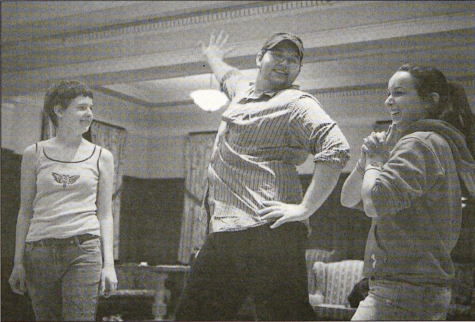
The organizers of Drag Show said that they plan to counter these threats with hope, joy and spectacle. “It makes me feel like this year’s show has to be as big as possible,” stated Rodrigues Santos. “It’s gonna be so beautiful, and queer and just such a beautiful moment of expression.”
The power of Drag Show does not fade at the curtain call. If anything, it grows with time, solidifying in the participants’ memories. For instance, Rodrigues Santos highlighted a nude performance of Radiohead’s “Creep” from her first year as an empowering image. Likewise, Rivera recalled a “Benjamin Franklin lingerie look” that has stuck with them since its original debut. Drag Show has the potential to wedge itself into the school’s conscience — its institutional memory, in other words — and inspire future Grinnell students.
This semester’s show continues and adapts the traditions of activism from previous shows. As Smith-Benanti told me, “you’re living history right now.”




























































